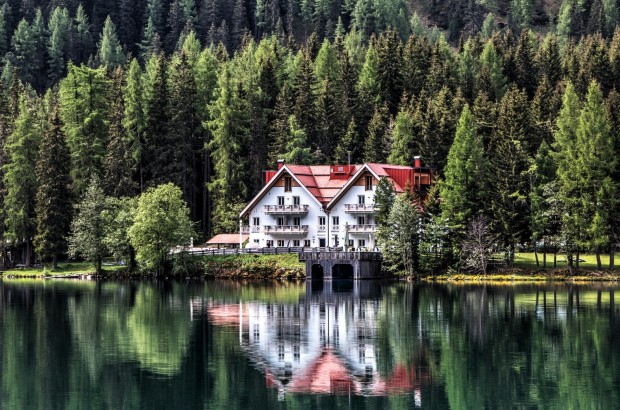If you're seeking refuge from city noise, off-grid homes offer a perfect escape. Discover the variety of off-grid house plans available to suit your ideal lifestyle and design preferences.

(Photo : Pexels/eberhard grossgasteiger )
1. Passive Solar House Plans
To provide efficient heating and cooling, they are constructed to make the least amount of use of natural sunlight possible. These kinds of house plans feature huge windows and skylights, which allow an abundance of natural light to enter the dwelling. In most cases, it is constructed with concrete or tile floors to provide the highest possible heat absorption and retention qualities.
2. Tiny House Plans
Tiny house plans are compact and necessitate minimal expenditures. Their typically modest size, less than 500 square feet, allows them more space-efficient and effective energy utilization. This off-grid house layout is a great choice for those who want to pursue off-grid living as another way of life.
3. Straw Bale Home Plans
Built with straw bales as the building component, the straw bale house concept is yet another environmentally beneficial option. To build a strong and well-insulated construction, several bales are stacked and subsequently plastered on the walls.
4. Earthship House Plans
These designs, which use recycled and natural materials, seek to build a house that is not only environmentally friendly but also somewhat reasonably cost-effective. They are designed to be entirely self-sufficient homes. Old tyres that have been packed with dirt are usually used in the construction of earthship homes because of their superior insulation and thermal mass properties.
Also Read: 5 Effective Ways to Show Your Construction Team How Much You Value Them
5. Cob House Plans
Using natural resources, this design, which is somewhat similar to blueprints for straw bale homes, builds a construction that is both environmentally friendly and well-insulated. These houses are constructed using clay, sand, and straw, then formed into walls and left to cure before use.
6. Grid Cabin or Residential Plan
For those who wish to live in a more remote location but yet want to keep a good share of the lifestyle they used in the past, a cabin or residential plan disconnected from the grid is the perfect place to live. Building a house in a far-off area calls for finding sources of sewer, water, and electricity. These homes can look into more environmentally friendly solutions, even though this presents a problem throughout the design and construction process. Residents of off-grid locations can take advantage of modern conveniences without having to rely on the overburdened grid if they make use of renewable resources for power, pump their water, and use compost alternatives for waste management.
7. Geodesic Dome Plan
A geodesic dome was initially intended to be used as a planetarium. It was revered for the enormity of its enclosed surface and its weight-bearing capabilities from the time it was first introduced shortly after World War I. It can withstand loads far heavier than their size would enable them to handle since the triangular sections of the dome are structurally strong and distribute the structural stress throughout the construction.
8. Container Home Plan
Homes made from shipping containers are becoming increasingly popular as a means of promoting sustainability through recycling. Every day, shipping containers are utilized to transport items all over the world. Through the process of repurposing old containers into contemporary residences that are independent of the grid, constructors are usually able to reduce trash.
Related Article: 5 Critical Mistakes to Dodge When Building Your Ultimate Off-Grid Home







